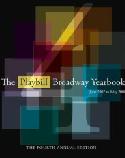SITE GUIDE
SEARCH
REVIEWS
REVIEW ARCHIVES
ADVERTISING AT CURTAINUP
FEATURES
NEWS
Etcetera and
Short Term Listings
LISTINGS
Broadway
Off-Broadway
NYC Restaurants
BOOKS and CDs
OTHER PLACES
Berkshires
London
California
Connecticut
New Jersey
DC
Philadelphia
Elsewhere
QUOTES
TKTS
PLAYWRIGHTS' ALBUMS
LETTERS TO EDITOR
FILM
LINKS
MISCELLANEOUS
Free Updates
Masthead
A CurtainUp Review
Architecting
By Jenny Sandman
As a transplanted Southerner, naturally I appreciate plays that feature both Gone With the Wind and post-Katrina New Orleans. The TEAM has created the first play I've ever seen that examinesGone With the Wind, one of my favorite books, but one that isn't exactly politically correct. It's actually several plays in one, all overlapping into a crazy quilt of ideas, fictional characters, actual people, and time periods.
An architect comes to New Orleans to aid in the rebuilding; along the way, she encounters Margaret Mitchell (who died in 1949), Henry Adams (real-life nineteenth-century historian), Scarlett O'Hara, Rhett Butler, Ashley Wilkes, beauty pageant contestants, an overbearing Hollywood producer who wants to remake Gone With the Wind, and an irate bartender who objects to having her flood-damaged business torn down. The swirl of ideas touched upon include reconstruction, the Old South, Southernism in general, racism, historical fact vs. literary fiction, the movie business, New Orleans, war, romance, natural disasters, architecture, and sweet tea, set against video footage and clips from the movie.
Times and attitudes change, of course, so, despite the enduring popularity of the movie version of GWTW (1939), the story is now seen as condescending at best and flat-out bigoted at worst. But Margaret Mitchell never meant for her only book to be considered racist or offensive. To her mind it was a eulogy for a civilization and a way of life now inexorably lost—a way of life still fetishized in that part of the world. Indeed, as she once remarked, she was ten before she realized the South lost. She wanted to examine those people who had what she deemed "gumption" and who, against all odds, manage to survive when their world collapsed. Scarlett O'Hara famously survived and prospered when many of those around her succumbed to despair, wounded pride and spiritual starvation.
The survival aspect of the story suddenly seems eerily prescient when dropped into post-Katrina New Orleans. While the spirit of New Orleans survived mostly intact, the city is still struggling, still full of crumbling houses, flood lines, empty lots, and literal and figurative ghosts. Architecting draws subtle connections between the Reconstruction after the Civil War, the rebuilding of post-Katrina New Orleans, and other attempted reconstructions. Another one that leaps most notably to mind is the one going on now in Iraq. To paraphrase Rhett Butler, there is more money to be made in the breaking apart of a civilization than in the building of one.
This is an ambitious play, and its true genius lies in the characters created by the TEAM, a group of theatre artists who bonded as freshmen at NYU many years ago. Their Margaret Mitchell is my favorite character—the stereotypical Atlantan with a sugar-sweet voice hiding a spine of steel.
The Scarlett O'Hara of the first act is mirrored in the second by a 24-year-old Arkansan who is traveling to New Orleans to compete in the "Miss Scarlett O'Hara" pageant (played by the same actress, of course). The historian's appearances are too few and too brief though the actor playing makes a poetic turn as both Mammy and Ashley Wilkes.
For all the clever postmodern interactions, however, the story itself is one act too long. While the first act is full of energy and surprises, the second act falls flat and fails to capitalize on the quiet poetry of the first. The overall momentum sputters to a halt long before the actual ending. The real reason to see this play is to see the TEAM in action. After all, where else can you see men in corsets dancing to "Dixie?"
|
How old are you, my dear?. . .— Rhett Butler Twenty-eight — Scarlett O'Hara That's not a vast age. It's a young age to have gained the whole world and lost your own soul, isn't it?— Rhett Butler |
An architect comes to New Orleans to aid in the rebuilding; along the way, she encounters Margaret Mitchell (who died in 1949), Henry Adams (real-life nineteenth-century historian), Scarlett O'Hara, Rhett Butler, Ashley Wilkes, beauty pageant contestants, an overbearing Hollywood producer who wants to remake Gone With the Wind, and an irate bartender who objects to having her flood-damaged business torn down. The swirl of ideas touched upon include reconstruction, the Old South, Southernism in general, racism, historical fact vs. literary fiction, the movie business, New Orleans, war, romance, natural disasters, architecture, and sweet tea, set against video footage and clips from the movie.
Times and attitudes change, of course, so, despite the enduring popularity of the movie version of GWTW (1939), the story is now seen as condescending at best and flat-out bigoted at worst. But Margaret Mitchell never meant for her only book to be considered racist or offensive. To her mind it was a eulogy for a civilization and a way of life now inexorably lost—a way of life still fetishized in that part of the world. Indeed, as she once remarked, she was ten before she realized the South lost. She wanted to examine those people who had what she deemed "gumption" and who, against all odds, manage to survive when their world collapsed. Scarlett O'Hara famously survived and prospered when many of those around her succumbed to despair, wounded pride and spiritual starvation.
The survival aspect of the story suddenly seems eerily prescient when dropped into post-Katrina New Orleans. While the spirit of New Orleans survived mostly intact, the city is still struggling, still full of crumbling houses, flood lines, empty lots, and literal and figurative ghosts. Architecting draws subtle connections between the Reconstruction after the Civil War, the rebuilding of post-Katrina New Orleans, and other attempted reconstructions. Another one that leaps most notably to mind is the one going on now in Iraq. To paraphrase Rhett Butler, there is more money to be made in the breaking apart of a civilization than in the building of one.
This is an ambitious play, and its true genius lies in the characters created by the TEAM, a group of theatre artists who bonded as freshmen at NYU many years ago. Their Margaret Mitchell is my favorite character—the stereotypical Atlantan with a sugar-sweet voice hiding a spine of steel.
The Scarlett O'Hara of the first act is mirrored in the second by a 24-year-old Arkansan who is traveling to New Orleans to compete in the "Miss Scarlett O'Hara" pageant (played by the same actress, of course). The historian's appearances are too few and too brief though the actor playing makes a poetic turn as both Mammy and Ashley Wilkes.
For all the clever postmodern interactions, however, the story itself is one act too long. While the first act is full of energy and surprises, the second act falls flat and fails to capitalize on the quiet poetry of the first. The overall momentum sputters to a halt long before the actual ending. The real reason to see this play is to see the TEAM in action. After all, where else can you see men in corsets dancing to "Dixie?"
|
Architecting Created by and starring the TEAM: Jessica Almasy, Frank Boyd, Heather Christian, Jill Frutkin, Libby King and Jake Margolin Directed by Rachel Chavkin Set and Costume Design: Nick Vaughan Lighting Design: Jake Heinrichs Sound Design: Matt Hubbs Video Design: Brian Scott Running Time: 150 minutes with one ten-minute intermission PS 122, 150 1st Avenue at East 9th Street; 212-352-3101 Tickets $20 Tuesday through Saturday at 7:30 pm, Sunday at 5 pm January 22—February 15 Reviewed by Jenny Sandman based on January 23rd performance |
|
REVIEW FEEDBACK Highlight one of the responses below and click "copy" or"CTRL+C"
Paste the highlighted text into the subject line (CTRL+ V): Feel free to add detailed comments in the body of the email. . .also the names and emails of any friends to whom you'd like us to forward a copy of this review. You can also contact us at Curtainup at Facebook or Curtainup at Twitter |
Try onlineseats.com for great seats to
Wicked
Jersey Boys
The Little Mermaid
Lion King
Shrek The Musical

South Pacific

In the Heights

Playbill 2007-08 Yearbook

Leonard Maltin's 2008 Movie Guide


Wicked
Jersey Boys
The Little Mermaid
Lion King
Shrek The Musical

South Pacific

In the Heights

Playbill 2007-08 Yearbook

Leonard Maltin's 2008 Movie Guide


